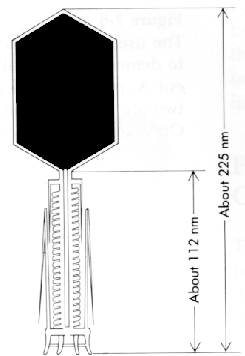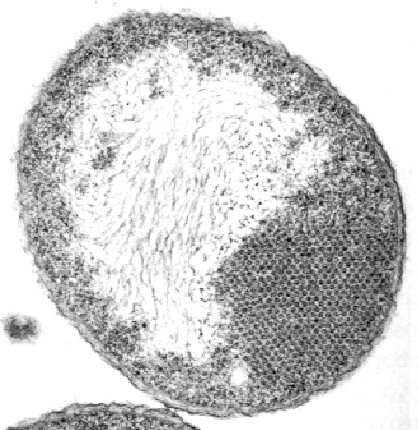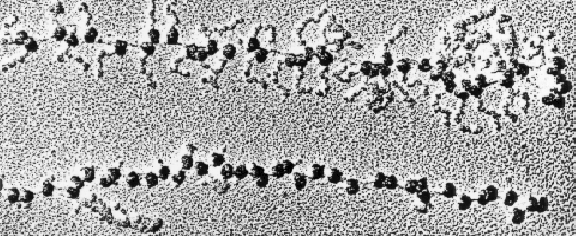
For once we've mastered the essential technology of life, assembling objects at the molecular level with molecular machines, there's no reason we can't rapidly exploit the central trick of life as well: getting the job done with machines that make copies of themselves.
Mass production has reshaped our industries, lives, economies, and societies, but it's been a limited form of mass production: one where the process of production was explicitly designed and rigidly oriented to making a given object.
Once we can build molecular machines, we can design machines that make copies of themselves. By doing so we achieve the second level of mass production: being able to make anything we can design at a cost fundamentally constrained only by the materials and information it contains.
If this seems absurd, just imagine how an engineer at the start of the twentieth century would have reacted to a description of photolithography, the technology we now use to make integrated circuits and printed circuit boards. ``You're telling me you can manufacture objects in the millions just by making photographs of them? Give me a break!''
In fact, if we want to make objects on the metre scale with molecular engineering, we're going to have to design replicating machines. The vacuum tube I showed you has about 1023 atoms in it, and if you try to build something that large atom by atom, it's going to take pretty long. If you add an atom every second, it'll take 1023 seconds which is a real problem because that's a million times longer than the current age of the universe. But, if you can get your molecular machines to crank out copies of themselves, you can set up a chain reaction that can generate numbers on that scale quite rapidly. That's how biology manufactures bacteria, butterflies, and buffaloes, and it works very well.
This is flexible manufacturing taken to the logical limit. An invention made on Monday could, by the following Friday, be in mass production, with billions of copies fabricated. It's the ultimate triumph of information over machinery, of software over hardware, of intellect over capital.
The consequences of this are truly hard to grasp. Just as the development of computers made many problems that have vexed mankind for centuries essentially trivial, we're looking here at the first fundamental change in the means of production in the last two million years. Our economic and societal structures have evolved around assumptions that will no longer be valid once technology reaches this milestone. And it may happen in the next ten years.
But the real question I haven't answered yet is this. ``Is it actually possible to make these little tiny machines out of atoms and then get them to replicate themselves, or this all just a pile of hooey, as ridiculous as, say, putting 16 million transistors on a piece of silicon the size of your fingernail?''

Let's look at how we might design such a machine. Here's a little gadget that looks like a lunar lander, but considerably smaller. It stands about 225 nanometres high. This device is designed to operate within a living system, to seek out cells of a particular type, land on them by extending its landing legs, then inject them with material stored in the tank at the top.
You could design something like this, for example, to locate cancerous cells in a human body and kill them.

Here's our little machine attached to a cell, with its injector poked through the cell membrane and emptying the tank into the cell's interior.
For a sense of scale, this entire gadget, standing on its tippy-toes would be less than a quarter the size of the smallest feature of a current microprocessor integrated circuit.
Could something like this be built?
Could it possibly work?

Yes. Here's a scanning electron microscope picture of the actual device. It wasn't designed on a CAD system; it evolved in nature. It's called bacteriophage T4. It's a virus that preys on E. Coli, a common bacterium that lives in the human intestine.
So molecular devices exist, work, and even succeed in replicating themselves in a proper environment.

Here's an electron micrograph of some E. coli cells infected with another virus, phage f2. The crystalline lattice in the corner of the cell is an array of self-assembled copies of the virus, manufactured within the cell.
You might also ask, ``Can we store information at the molecular level?''

The answer to this is also yes, and each of us is living proof.
Here's a picture of a molecular-level file copy operation in progress. This is a 140,000 times blow-up of a strand of messenger RNA being transcribed into the proteins it encodes by a bunch of ribosomes--they're the little beads on the string of RNA. The bumpy strings coming out the sides are the protein chains being assembled by the ribosomes. Each ribosome is a little molecular machine about 20 nanometres across that manufactures proteins to order by reading a tape called messenger RNA and assembling the protein it describes according to the genetic code.
There are quadrillions of them busy at work in each of your bodies at this very moment, and they're about as accurate in copying the molecular data in your DNA as a typical hard disc drive.
Since these biological molecular machines obviously exist, and clearly work, and since biology follows the same laws of physics and chemistry we apply as engineers, there's no question our molecular machines will work. All we have to do is figure out how to design and build them.
And with the rapid progress on all fronts toward molecular fabrication, design may become the most important part of the puzzle.
Editor: John Walker